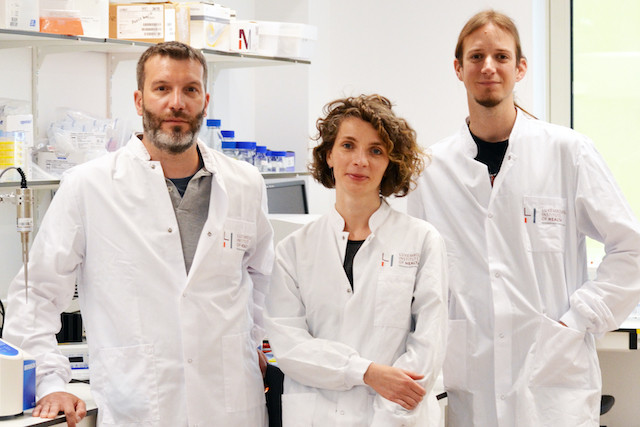“There is a clear medical need to treating chronic pain, because you cannot really tackle this with classical opioids without important side effects,” said Andy Chevigné, who oversees the research project.
The US department of health, for example, estimates that more than 130 people a day die from opioid-related drug overdoses in the country. More than 10 million people are misusing prescription opioids such as painkillers, it says, leading the US to declare the crisis a national emergency.
The LIH team had initially set out to study a group of cell membrane receptors that “was so far really neglected,” Chevigné said. They ended up developing a molecule--LIH383--that could fundamentally change chronic pain treatment.
Wellbeing without addiction
Classical opioid pain medication--such as morphine, oxycodone, fentanyl or codeine--works on opioid receptors in the brain that respond to feel-good endorphins. “If you exacerbate and sustain the activation of the system, it leads to rapid tolerance and addiction,” the scientist said. This limits the use of these drugs for chronic pain treatment.
The receptor studied by the LIH team works differently. It captures endorphins naturally produced in the brain preventing them from being effective. The molecule developed by Chevigné and his colleagues blocks this newly discovered receptor, named ACKR3.
“The level of natural endorphins that your brain produces will be slowly upregulated,” Chevigné said. “You will increase the level of wellbeing without having to directly target the other receptors that frequently lead to addiction.” This discovery, recently published in the journal Nature Communications, could also help in the treatment of depression.
“The last opioid receptors were identified decades ago. I’m proud that in our team in Luxembourg we were able to impact the field,” Chevigné said. Their findings have been recognised internationally with Chevigné and his colleague Martyna Szpakowska this week receiving the prestigious Galien Prize of Pharmacology 2019 for their discoveries.
Developing a drug
With the project some four years in the making, the team is now working on perfecting the molecule, improving its pharmacological profile so it can be developed into medication. It could be a while yet though before any of the next generation painkillers hit the market. “To develop a drug takes about ten years,” said Chevigné, although LIH is hoping to speed up the process.
The study of this specific type of receptor could also benefit cancer patients. “The ACKR3 receptor has a dual chemokine-opioid function,” said Chevigné. Chemokines induce and guide the migration of cells, thereby also contributing to the control of cancer metastasis. “We hope that this drug targeting ACKR3 will also be able to regulate the migration of tumour cells,” he said.
While this is still very much a hypothesis, Chevigné’s team is working with LIH’s oncology department and external partners to carry out tests on models that could prove the theory correct. And there could be more discoveries yet to come. “We’re investigating six to seven different receptors that are implicated in different pathologies, including different steps in cancer development,” Chevigné said.
The researchers have submitted paperwork to secure a patent on its LIH383 molecule, giving them control over where they want to take the project next. For Chevigné it is clear that the heart of the operations and decisions will stay in Luxembourg, where the work was funded with support from the Ministry of Higher Education and Research, the National Research Fund (FNR) and the Télévie charity fund.
